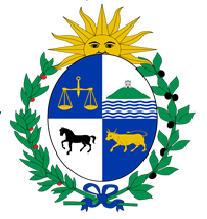Uruguay: Government
Key Figures
- Chief of State:
- President Luis Alberto Lacalle Pou
- Head of Government:
- President Luis Alberto Lacalle Pou
Overview
- Government Name:
- Oriental Republic of Uruguay
- Constitution:
- Adopted: 1967; Has been amended in 1989, 1994, 1996, and 2004. Topics include: the nation and its sovereignty, rights, duties, and guarantees, citizenship and suffrage, the form of government and its various powers, sections of the general assembly, provisions common to both chambers, and the permanent commission; introduction, and relations between the executive and legislative power.
- Government Type:
- Constitutional Republic

Index of Economic Freedom
Country Risk Rating
Government Branches
| Main Powers | Election Process | Election Cycle 1 | |
|---|---|---|---|
| Executive | Powers include command of all armed forces, promulgation of all laws, issuing special regulations necessary for its implementation, right to veto laws, and negotiation of treaties with the ratification of the legislature. |
President is elected by absolute majority vote through a two-round system. |
5 years |
| Judicial | An independent power of the state that heads both civilian and military courts. |
Appointed by executive branch. |
10 years |
| Legislative | Bicameral General Assembly enacts laws and regulates the administration of justice. |
Chamber of Senators (Cámara de Senadores) are elected through a closed-list proportional representation system, and 1 member is filled ex officio. Chamber of Representatives (Cámara de Representantes) are elected through a closed-list proportional representation system. |
5 years |
Regional Trade Blocs
International Organization Participation [2]
Environmental Agreements [3]
Tax Information [2]
- Tax Authority:
- Directorate General of Taxes
- Tax Name:
- VAT
Sources:
- ElectionGuide http://www.electionguide.org/
- EY, http://www.ey.com
- CIA World Factbook, https://www.cia.gov/the-world-factbook/
- U.S. Bilateral Relations Fact Sheets http://www.state.gov/r/pa/ei/bgn/


